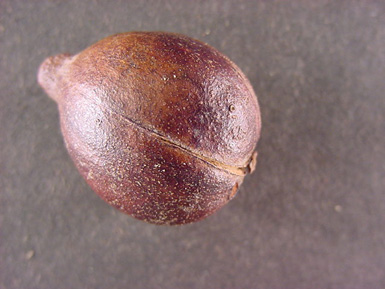Form: This is a medium to large tree reaching 70-100 ft. with a dbh of 1-2 ft.
Leaves:
Arrangement: alternate; usually 5 leaflets
Shape: lanceolate
Margin: finely serrate
Texture: glabrous above and pubescent below
Bark: The bark is thick, firm, dark gray and closely and deeply furrowed. It has interlacing ridges that form diamond shapes.
Twigs and buds: The twigs are glabrous, slender, and reddish-brown in color.
Flowers and fruit: This species produces a pear-shaped nut, with a thin husk that typically has a teardrop point at one end*

Distinguishing characteristics: It has a glabrous petiole and rachis which distinguishes it from the pubescent rachis on mockernut hickory. The teardrop pointed nut is also unique to pignut.
Range: This species is widely distributed across the eastern United States: north into Maine, across the central hardwood region into Iowa, south into central Florida and east to the Atlantic coast.
Silvics: Pignut has intermediate tolerance of shade. It grows well on both dry and mesic upland sites.
Ecological and cultural importance: The wood is used in specialty applications. Deer and small mammals browse it's leaves and twigs, and feed on the nuts.